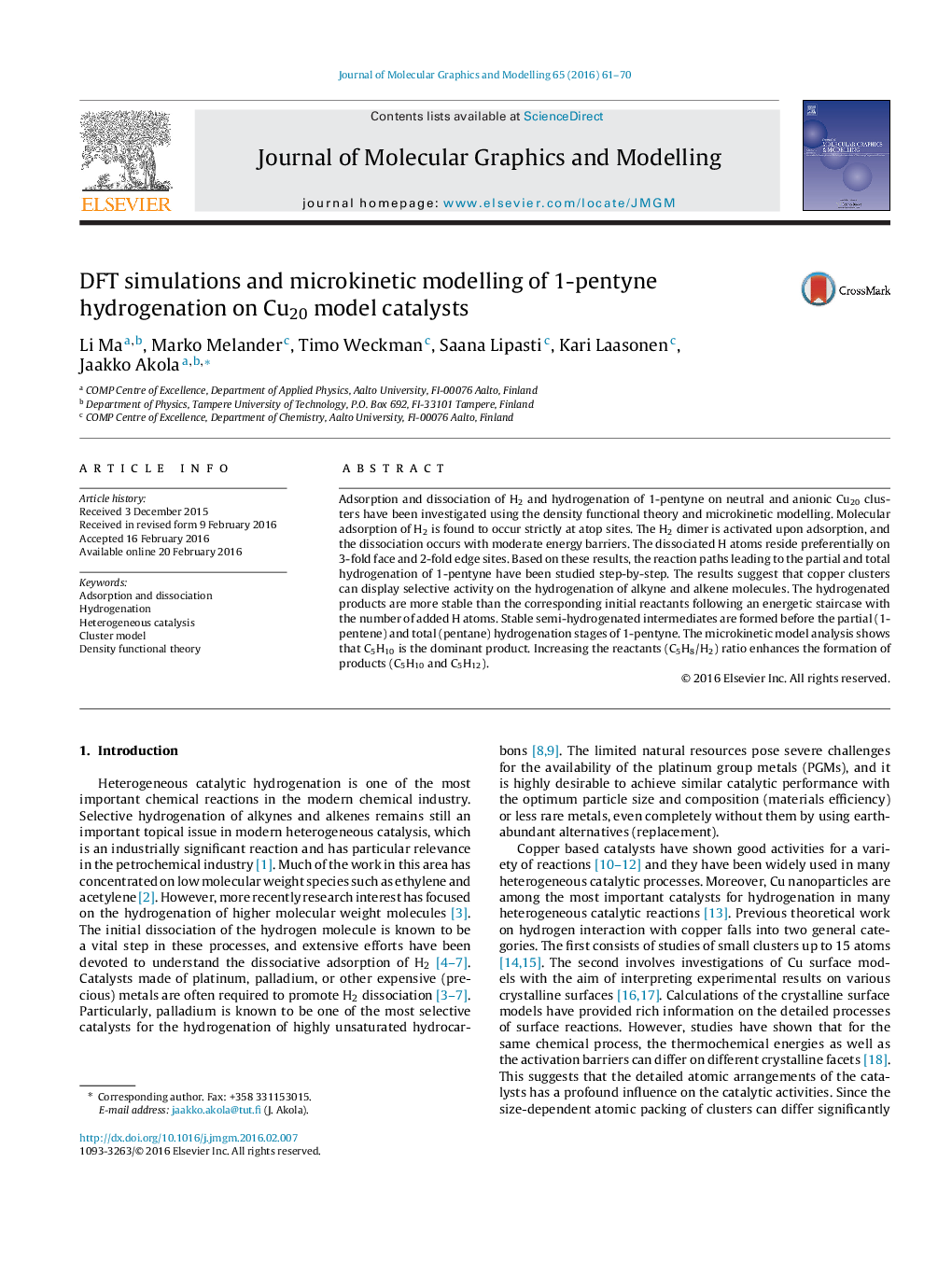| Article ID | Journal | Published Year | Pages | File Type |
|---|---|---|---|---|
| 443417 | Journal of Molecular Graphics and Modelling | 2016 | 10 Pages |
•H2 dissociation occurs with moderate energy barriers on Cu clusters.•Cu clusters as selective catalysts on the hydrogenation of alkynes and alkenes.•Increasing the reactants ratio enhances the formation of products.
Adsorption and dissociation of H2 and hydrogenation of 1-pentyne on neutral and anionic Cu20 clusters have been investigated using the density functional theory and microkinetic modelling. Molecular adsorption of H2 is found to occur strictly at atop sites. The H2 dimer is activated upon adsorption, and the dissociation occurs with moderate energy barriers. The dissociated H atoms reside preferentially on 3-fold face and 2-fold edge sites. Based on these results, the reaction paths leading to the partial and total hydrogenation of 1-pentyne have been studied step-by-step. The results suggest that copper clusters can display selective activity on the hydrogenation of alkyne and alkene molecules. The hydrogenated products are more stable than the corresponding initial reactants following an energetic staircase with the number of added H atoms. Stable semi-hydrogenated intermediates are formed before the partial (1-pentene) and total (pentane) hydrogenation stages of 1-pentyne. The microkinetic model analysis shows that C5H10 is the dominant product. Increasing the reactants (C5H8/H2) ratio enhances the formation of products (C5H10 and C5H12).
Graphical abstractFigure optionsDownload full-size imageDownload high-quality image (140 K)Download as PowerPoint slide
